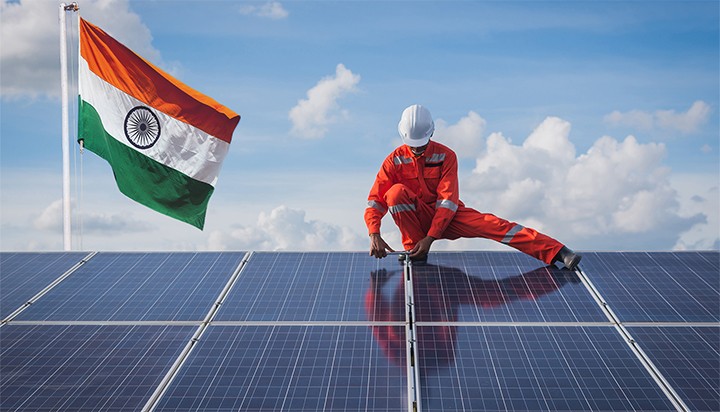“The future is bright, the future is solar!” – A vision that India is not just dreaming of, but actively working towards.
With ambitious goals, India aims to become a global solar power leader by 2030, setting an example for the world. So, how is this happening, and what makes this journey worth watching?
A Solar Revolution: Turning Dreams into Reality
India, already the third-largest electricity user, is racing towards an even brighter future by harnessing the power of the sun. By 2030, the country plans to generate 450 GW of renewable energy, with 280 GW coming from solar alone. That’s more than 60% of the target! Imagine the transformation — a nation bathed in sunlight, literally and figuratively.
This shift to solar energy isn’t just about reducing carbon footprints; it’s a strategic move to reduce dependency on fossil fuels. As India embraces this solar revolution, it’s lighting the way for other nations to follow suit.
Powering Up with Solar: Progress So Far
India’s solar journey already has some impressive milestones. Did you know that three of the world’s five largest solar parks are in India? The massive Bhadla Solar Park in Rajasthan, for example, is the world’s largest at 2,255 MW.
With solar capacity already at 95 GW (and counting), India is steadily inching closer to its ambitious goals. And what’s thrilling about this? We’re only getting started!
The Push for Solar: Why Now?
Back in 2015, India set a bold goal of achieving 100 GW of solar energy by 2022. Fast forward to now, and this goal has been raised to a staggering 280 GW by 2030. Why the push for solar energy?
It’s straightforward — India is determined to fulfill its promise under the Paris Agreement by ensuring that 50% of its energy comes from non-fossil fuel sources by 2030. And solar power is central to this plan.
But it’s not just about numbers. Solar energy is cost-effective, clean, and sustainable. With India’s sunny weather, why not make the most of it?
The Road Ahead: Challenges and Opportunities
Naturally, every great journey comes with its own set of challenges. While India’s solar power ambitions are sky-high, the country faces hurdles like the reliance on imports for critical solar components, such as solar cells and inverters. In 2019-2020, India spent over $2.5 billion on solar imports alone.
To tackle this, the government is pushing for more domestic manufacturing. Think of it as “Make in India” but for solar power. While India’s manufacturing capacity is growing, there’s still a long way to go. But as they say, “Rome wasn’t built in a day,” and India’s solar leadership will take time, effort, and strategic partnerships.
Partnerships Pave the Way
To address these supply chain challenges, India is looking to partner with countries like Oman and other Gulf nations. These partnerships can help India secure crucial resources, like polysilicon, a key material used in solar cells. By working together, India can ensure a smooth supply chain while positioning itself as a competitive leader in the global solar market.
A Bright Future for All
India’s solar mission is more than just a step towards renewable energy—it’s a leap towards a sustainable and prosperous future. It’s about reducing pollution, becoming energy independent, and offering a beacon of hope to the world.
The government’s initiatives, combined with strategic partnerships and a strong focus on domestic manufacturing, are paving the way for India to truly shine on the global stage.
As India continues to build its solar empire, it’s clear that the future is not just bright—it’s solar-powered. In the words of Mahatma Gandhi, “The future depends on what we do in the present.”
At this moment, India is paving the way for a solar-powered future, motivating others to follow suit. Let’s keep cheering for the sun!

